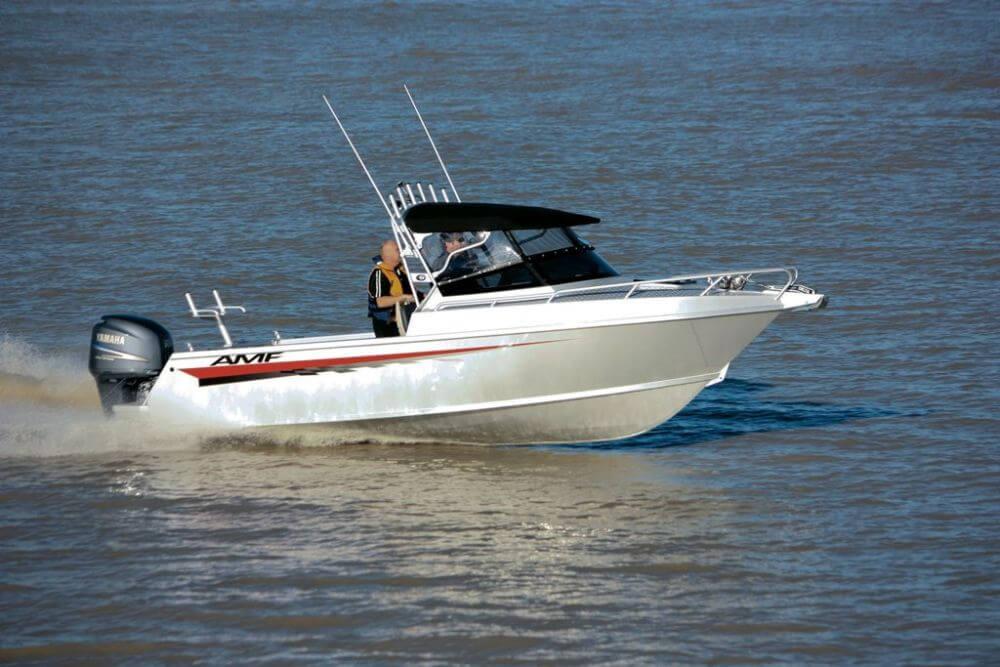The decision making process in buying a boat is often one fraught with being unsure, indecisive and simply wondering if it’s the boat for you. However, in the case of AMF boats, their reputation precedes them and it’s word of mouth that has people opening the cheque books and being the envy of many. Freddy Foote joined one first-time AMF owner on the boat’s maiden voyage.
It’s not often a boating journalist gets to go out on a boat with the actual owner of the vessel, but when you do, it often adds some great aspect to the article, as they usually offer some great insight in to why this particular boat was for them and how it suits their requirements. For the test of this particular boat, it was an AMF Pro Sport 660 Vee Berth Cabin, powered with a Yamaha 200hp four-stroke outboard purchased to order from Wanganui aluminium builder AMF Boats.
However, this time around this was the first time the boat had been launched with the owner present. A busy schedule had meant that he hadn’t had a chance to take it for a run on delivery from the factory, and weather and timing once back in Auckland had meant the boat had been sitting ready to go for a couple of months.
Whilst he didn’t want to be named, he commented that he’d had a number of boats in the past, all at varying levels of comfort and performance. He said that the decision to go with the AMF had come down to the reputation of the brand for their performance in all water conditions.
“I wanted a boat that was going to perform well in all water conditions, not just some of them. From my research the AMF ticked all my boxes, performs well, safe for myself and fishing trip with the grand kids, well engineered and practical from a fishing perspective.”
As we left the boat ramp, he was kind enough to let me have the first proper drive of the boat, something I felt a little guilty about, considering he was the one who just months prior had written out the cheque for around $126,000 for his new baby. What a top bloke!
It was also very pleasing to see the choppy water conditions that greeted us as we left the marina, and for both of us to see what the boat could really do.
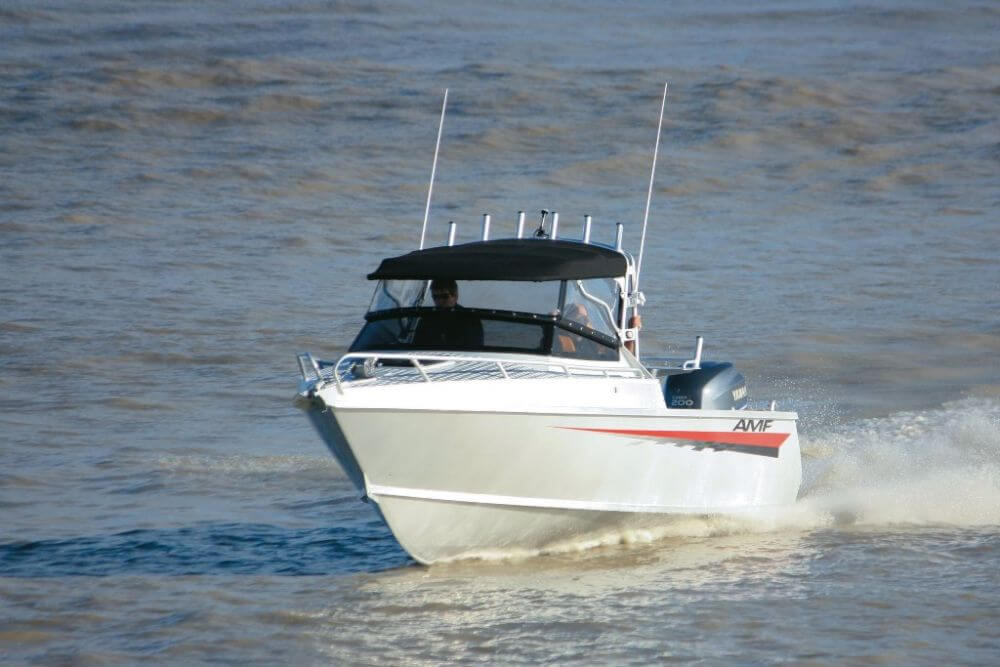
Engineered, not just built
Once again, the engineering of the 660 is amongst the best I’ve seen, and very similar to the last AMF model I tested, the 720 Pro Sport.
I choose to use the word engineered rather than built or manufactured as they just don’t seem strong enough adjectives to use when describing an AMF.
Whilst you can’t see them, a 10mm x 75mm keel bar with a substantial box beam either side runs from the cabin bulkhead to the transom. Affixed to these box beams are the 6mm alloy plates which form the hull underneath, while above there is the 5mm treadplate cockpit floor. Whilst I’m no engineer, once onboard and underway you can immediately sense what you’ve got underneath you, and it is best described as solid, not to mention the ten-year hull warranty, or as AMF says ‘Guaranteed Tough.”
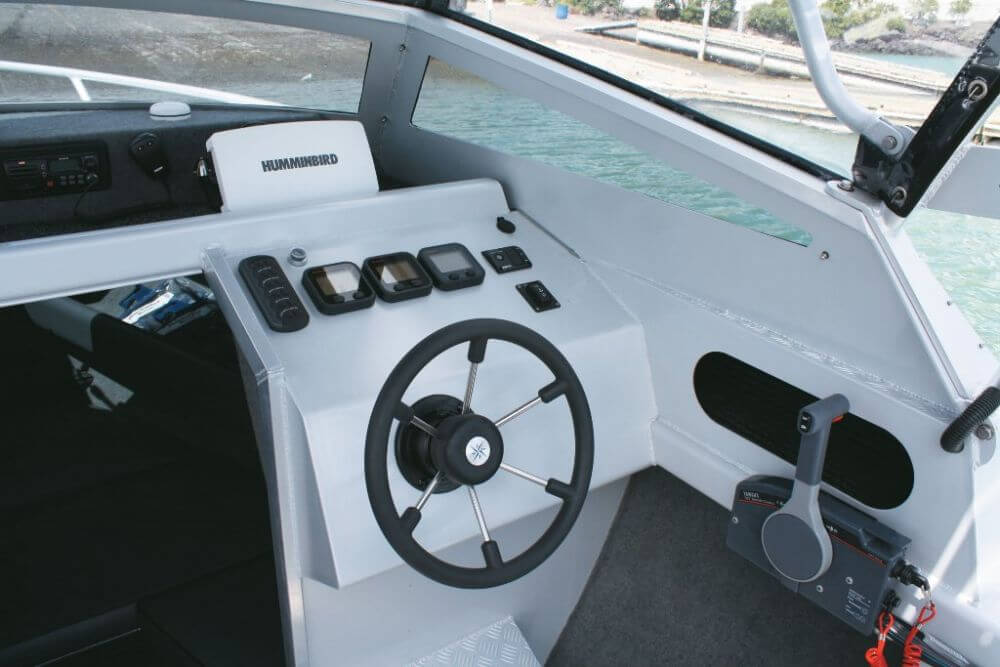
Fisherman friendly
Having covered all the technical stuff about boating construction, what’s it like for fishing? After all, our new AMF owner is a pretty enthusiastic fisherman, and regularly chases larger game at various tournaments in Vanuatu and Hawaii, so does require a fairly serious fishing unit for when he’s back home.
One of the prominent features on the 660 is the targa top/rocket launcher, great for three reasons – firstly that it has provision for up to six rods, secondly that it can fold-down out of the way for better garage storage and thirdly that with the addition of the ‘clears’ it gives the feeling of a hardtop without actually being one.
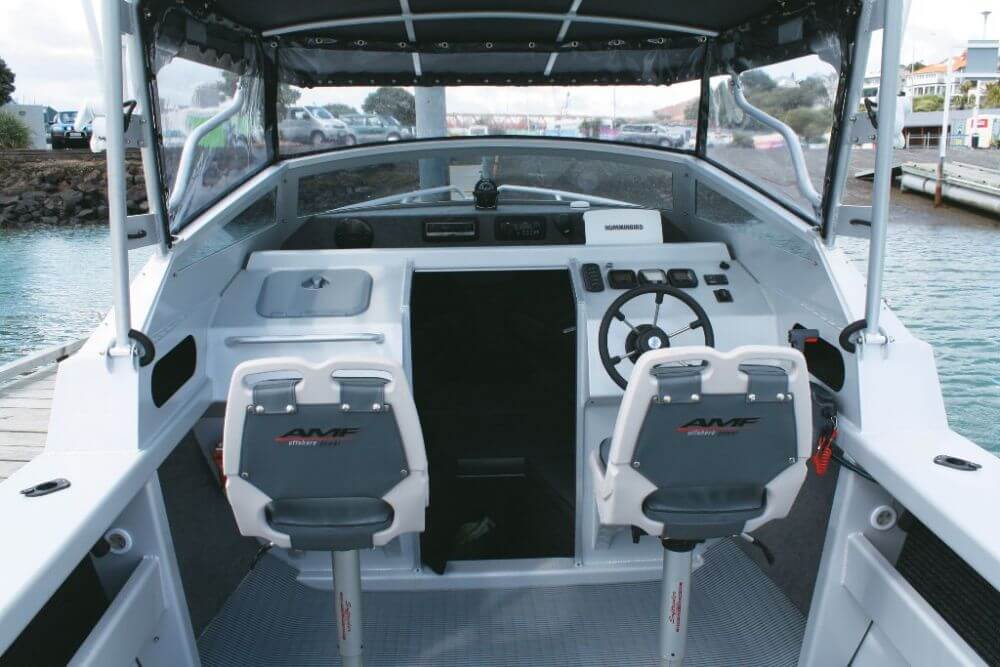
At the helm we felt nice and snug in the blustery conditions, the clears attached to the above targa top keeping us well protected. My only gripe is that as they are clip on clears, the visibility isn’t 100% as it would be with a normal windscreen, so I did find myself peering down from time to time just to reaffirm with myself that I was correctly identifying everything on the water ahead of us.
The seating configuration is in the form of two upholstered pedestal seats with swivelling, sliding bases. For additional seating, a large bin seat is fastened to the middle of the cockpit, and in addition to providing plenty of storage for the day’s catch, it provides a great place to sit when underway.
The dash area is extremely neat and tidy. Engine instruments and switches are cleanly mounted into the aluminium dash section. Above, on the carpeted forward dash facia, we had the stereo with speaker and VHF flush mounted while a Humminbird 958CX fishfinder GPS multifunction display was mounted on a bracket immediately in front of the skipper.
Anchoring duties are done from the helm, with a rope chain windlass on the foredeck doing all the hard work. Should you need to access the foredeck area, a large deck hatch provides immediate access to the anchor locker and anchoring systems.
Some handy extra storage features are around the helm, in the form of carpeted side pockets next to the throttle control on the driver’s side, and an identical one over on the passenger side. A large glove box is located immediately in front of the passenger also.
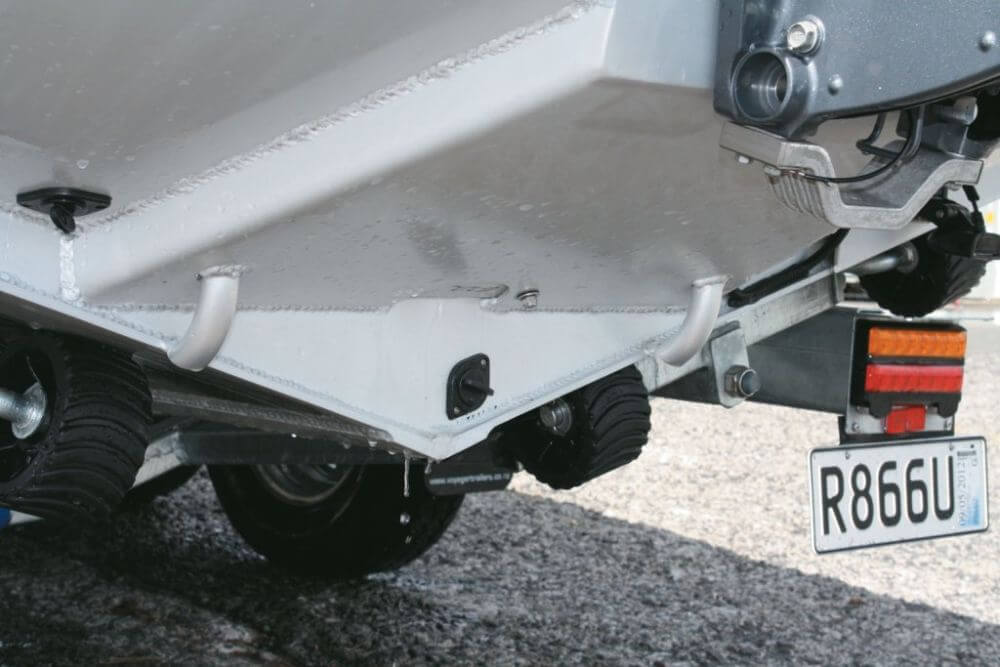
At the business end, the sizeable cockpit has large, deep and carpeted side shelves running the length of the cockpit. All of the onboard systems, such as batteries, switches, wash down pump, are housed in three lockers inside the transom.
Hanging off the back is the Yamaha 200hp four-stroke outboard. Thinking of all things fishing, I was on the hunt for a live bait tank, but couldn’t seem to track it down – turns out it was right under my nose. Designer Brian Collings has actually incorporated the live bait tank into the outboard well. “We’ve put a couple of water pick-ups underneath the outboard well and plumbed it all up, as well as adding a drain plug underneath to discharge any water once underway – the set-up works very well.”
For’ard, the cabin is fully lined and there is plenty of storage underneath the full-length bunks as well as the side shelves that run the length of the cabin. There is provision for a chemical toilet should you wish and you can also opt for a lockable drop door for privacy and security.
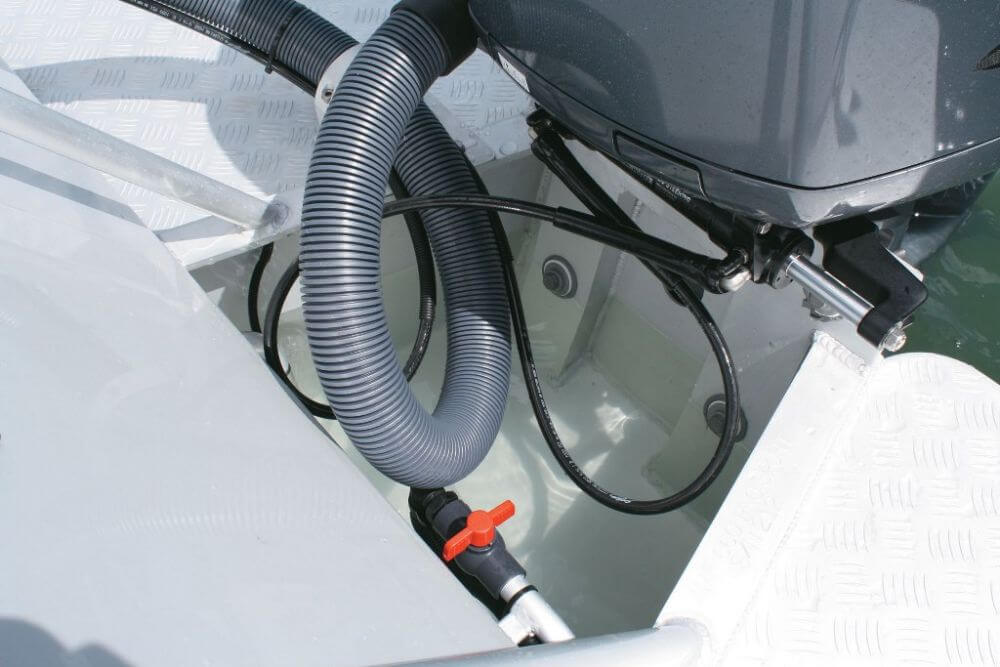
Economical boating
Under the floor of this 660 Pro Sport is a 220-litre fuel tank, which feeds the Yamaha 200hp four-stroke outboard. I mentioned that the owner of this 660 was a reasonably serious game fisherman and plans to tackle some larger game over the summer months.
A quick test of trolling speeds saw the Yamaha using just 6 litres per hour at 6.5knots, meaning that he’ll be able to spend some long days out on the water.
As mentioned, the water conditions were fairly choppy, so finding a calm piece of water to stretch the legs of the 660 proved tricky. However, one quick burst and we managed to top it out at 48.3mph @ 6000rpm. We were running the boat with a full load of fuel and two of us onboard, so given the ride conditions and loading, I’d say close to 50mph would be achievable in perfect conditions.
I thought the Yamaha 200hp four-stroke outboard was the ideal match for the 660 hull. It gave plenty of torque and grunt when you needed it and returned healthy fuel numbers. Should you wish, a 175hp would perform well, as would maybe a 150hp at a stretch, and going the other way you could opt for a 225hp, though I don’t see why you would need to. If outboards aren’t your thing, then there is an option for a diesel sterndrive.
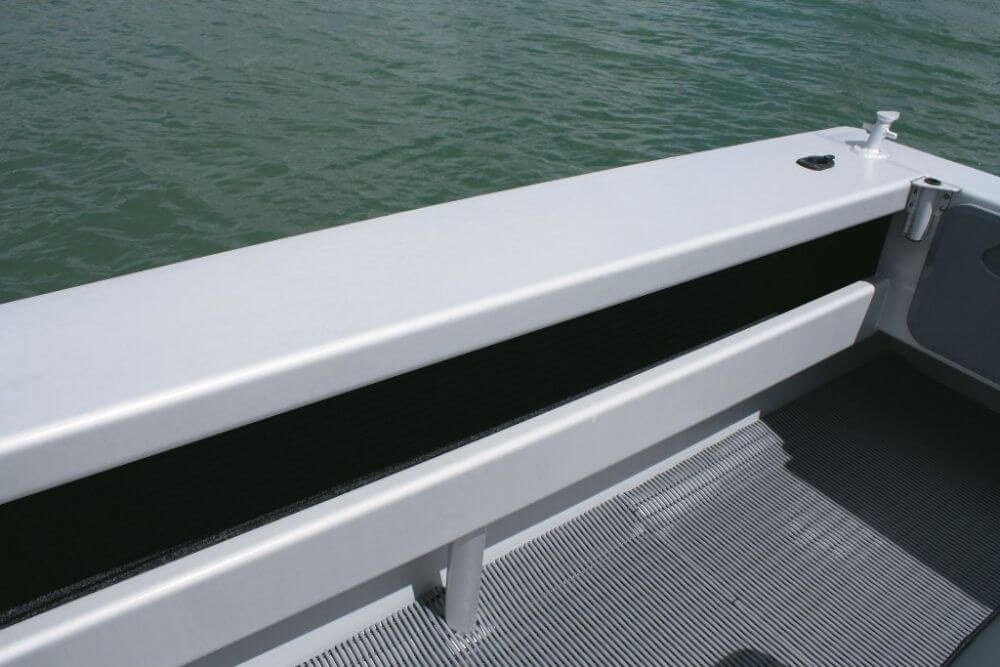
Having been on a couple of different AMF’s now, I continually come back with the same impression – you’ll break before the boat will. It’s no wonder that ten New Zealand Coastguard units are now running 5.8-11.7m AMF RIB’s for rescue duties.
In the case of the 660 and the blustery, choppy conditions that we experienced on test day, the harder and faster you pushed it, the better it went. Running with the chop at just under 30knots the ride and handling of the boat is impossible to fault. In fact, we could have gone harder and faster if we had wished. The hull gives a fantastic ride, very forgiving and just eats up whatever is thrown at it.
One noticeable thing is that given that it was a fairly nasty day to be out on the water, we both commented on how dry the ride was – once we got back to the ramp there wasn’t a single drop of water on the screen.
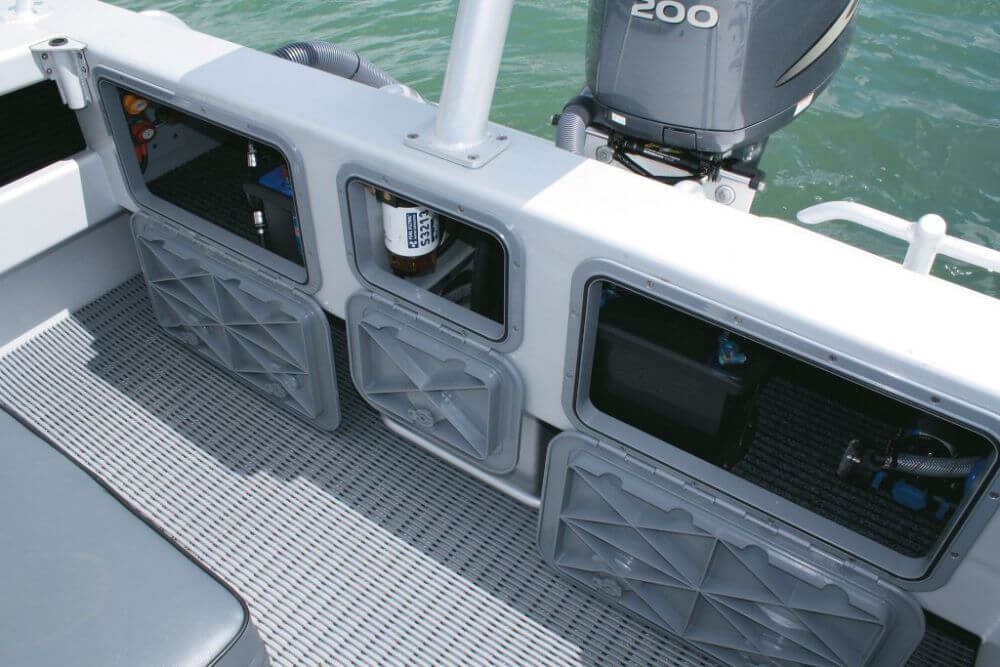
As tested, this rig left the AMF Wanganui factory at $126,868 which includes a few optional extras off the AMF spec. sheet. However, basic packages start from $94,865, powered by a 200hp Yamaha Saltwater Series two stroke outboard and with a tandem axle Voyager trailer.
Overall, I was very impressed. AMF is one of those brands that everyone knows about and speaks very highly of and should you ever find yourself owning one, you will certainly have joined an elite club.
Having been lucky enough to get out on a few boats over the 10 years I’ve been doing this job, I have a fair appreciation for what is out there on the market. People often ask me, what boat would you buy if you could? It has often proven a very hard question to answer. Would I buy an AMF 660 Vee Berth Cabin? Most definitely!
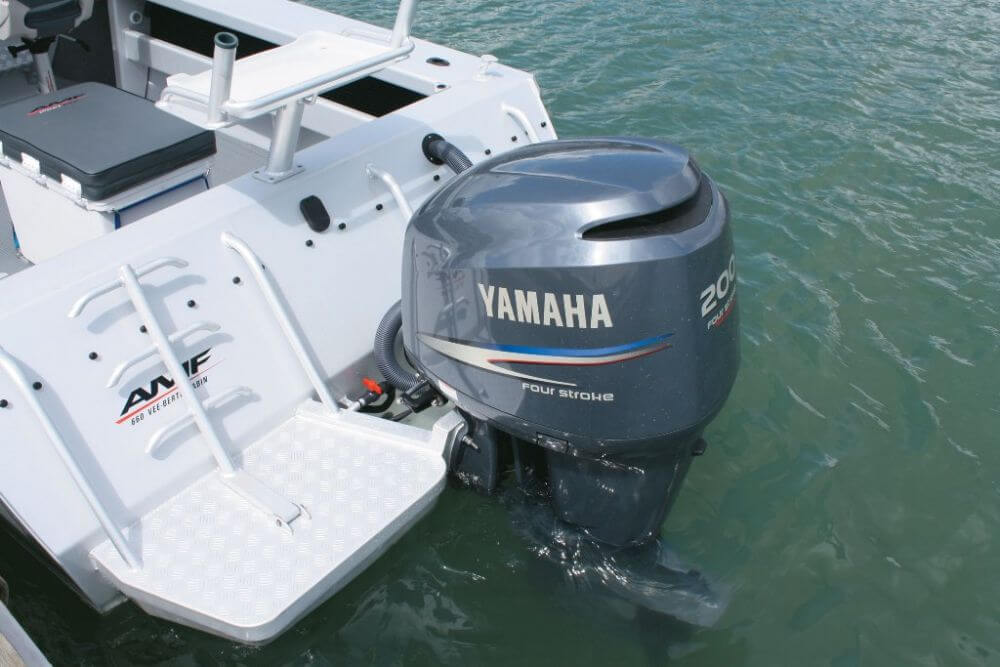
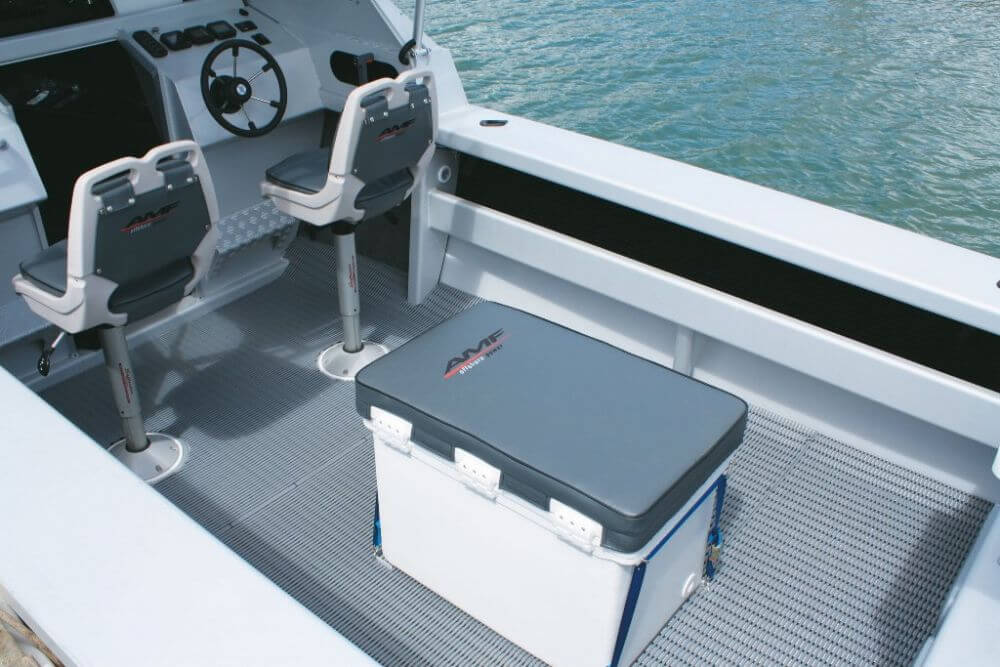
Specifications
- Model: AMF Pro Sport 660
- Priced from: $94,865
- Price as tested: $126,868
- Type: Cabin
- Construction: Aluminium
- LOA: 6.8m
- Beam: 2.45m
- Deadrise: 18.5 degrees
- Trailerable weight: 2100kg
- Engine capacity: 225hp
- Power options: outboard/diesel sterndrive
- Fuel capacity: 220L
Performance – Yamaha 200
| rpm | mph | L/h | ||
| 600 | 2.1 | 2.2 | ||
| 1000 | 6.3 | 4.4 | ||
| 1500 | 8 | 6.5 | ||
| 2000 | 9.2 | 8.9 | ||
| 2500 | 10.5 | 13.7 | ||
| 3000 | 12.5 | 20.5 | ||
| 3500 | 20.5 | 24 | ||
| 4000 | 23 | 29 | ||
| 4500 | 31 | 38.2 | ||
| 5000 | 34.5 | 47.5 | ||
| 5500 | 41.5 | 59 | ||
| 6000 | 48.3 | 71.5 |


